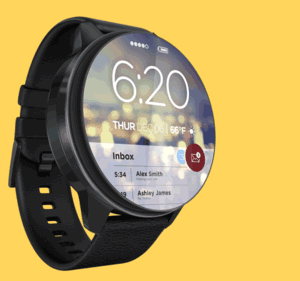
Qualcomm Announces Three New Snapdragon Processors, Wear Platform And First Gigabit Class LTE Modem
Qualcomm today announced three new next-generation Qualcomm Snapdragon processors - Snapdragon 625, 435 and 425 - for mainstream smartphones, the Snapdragon Wear Platform based on the Wear 2100 SoC, and its sixth generation LTE modem chipset that supports download speeds up to 1 Gbps. Gigabit Class LTE Modem
We start with the discrete LTE multimode chipset -- the Qualcomm Snapdragon X16 LTE modem, which is built on a 14nm FinFET process -- and the Qualcomm RF Transceiver, WTR5975. The Snapdragon X16 LTE modem is the first commercially announced Gigabit Class LTE chipset designed to deliver LTE Category 16 download speeds of up to 1 Gbps, supporting up to 4x20 MHz downlink Carrier Aggregation (CA) across FDD and TDD spectrum with 256-QAM, and 2x20 MHz uplink carrier aggregation plus 64-QAM for uplink speeds up to 150 Mbps.
The Snapdragon X16 LTE modem is the first instantiation of Qualcomm Technologies’ new modem architecture. It can be used in a wide range of connected applications, ranging from mobile broadband to connectivity for Internet of Things (IoT) devices.
The Snapdragon X16 LTE modem also supports Licensed Assisted Access (LAA), the global standard for LTE in unlicensed spectrum, becoming the first commercially announced LTE Advanced Pro modem. LTE Advanced Pro, beginning with 3GPP Release 13, marks an important next phase for 4G that will expand the technology into new applications and usage models.
The Snapdragon X16 LTE modem is designed to reach Gigabit Class LTE speeds using the same amount of spectrum as Category 9 LTE devices. By using carrier aggregation and 4x4 MIMO, the Snapdragon X16 LTE modem can receive 10 unique streams of data using only three 20 MHz carriers. Its support for 256-QAM boosts the peak throughput of each stream from ~75 Mbps to ~100 Mbps, with additional gains possible with modem data compression. Additionally, with support for LAA as well as LTE-U, this combination reduces the amount of licensed spectrum required – to 40 MHz or less – to expand the number of operators that can deploy Gigabit Class LTE speeds around the globe.
In addition, the new modem and transceiver support Snapdragon All Mode, including all major cellular technologies (LTE FDD, LTE TDD, WCDMA, TD-SCDMA, EV-DO, CDMA 1x, and GSM/EDGE), frequency bands, Carrier Aggregation band combinations, LTE dual SIM, LTE Broadcast, HD and Ultra HD Voice over LTE (VoLTE) with single radio voice call continuity to 3G and 2G.
The Snapdragon X16 LTE modem pairs with the new WTR5975 RF transceiver, the first single-chip RF IC supporting Gigabit Class LTE, LTE-U and LAA with 5 GHz unlicensed band support. The WTR5975 supports up to 4x downlink CA, 2x uplink CA, all 3GPP-approved bands, including 3.5GHz bands 42 and 43, and 4x4 MIMO in a single transceiver chip, reducing the footprint required to support advanced CA and MIMO configurations. The WTR5975 also features a new digital interconnect interface designed to facilitate PCB layout in LTE devices by simplifying routing between the modem and transceiver.
has started offering samples of the Snapdragon X16 LTE modem, WTR5975 and QET4100, with first commercial products expected in second half of 2016.
Three New Snapdragon Processors
The Qualcomm Snapdragon Snapdragon 625, 435 and 425 processors are designed to deliver some of the latest premium-tier user experiences, using custom-developed technology including camera, video, gaming and connectivity, to the broader smartphone ecosystem.
All of these new Snapdragon processors incorporate technologies including support for LTE with carrier aggregation, Snapdragon All Mode, support for 802.11ac with MU-MIMO, dual camera image signal processors (ISPs), Qualcomm TruSignal technology for improved call reliability, Qualcomm Hexagon DSP for power efficient audio with sensor hub - meeting Android M sensor requirements, Qualcomm Quick Charge, and a reference design. Moreover, the Snapdragon 435 and 425 are pin compatible with each other and with the Snapdragon 430. Snapdragon 635, 435 and 425 are software compatible.
In addition to an increase in performance, the Snapdragon 625 is the first in its class of Snapdragon processors to use 14 nm FinFET technology, yielding up to a 35 percent reduction in power consumption compared to the previous generation. It incorporates an octa-core ARM Cortex-A53 CPU and includes an integrated X9 LTE modem, supporting 4G+ and peak upload speeds of 150 Mbps.
| Snapdragon 625 | Snapdragon 435 | Snapdragon 425 | |
CPU |
2.0+ GHz octa-core (8x ARM CortexA53) |
Up to 1.4 GHz octa-core (8x ARM CortexA53) |
Up to 1.4 GHz quad-core (4x ARM CortexA53) |
| GPU | Qualcomm Adreno506 GPU OpenGL ES 3.1+ |
Qualcomm Adreno505 GPU OpenGL ES 3.1+ |
Qualcomm Adreno308 GPU OpenGL ES 3.0 |
| DSP | Qualcomm HexagonDSP | ||
| Camera | Up to 24 MP camera Dual Image Sensor Processor (ISP) |
Up to 21 MP camera Dual Image Sensor Processor (ISP) |
Up to 16 MP camera Dual Image Sensor Processor (ISP) |
| Video | Up to 4K capture and playback H.264 (AVC) H.265 (HEVC) |
Up to 1080p capture and playback H.264 (AVC) H.265 (HEVC) |
|
| Display | 1900x1200 60fps UI 1080p30 |
Up to 1080p 60 fps UI Up to 1080p output |
1280x800 60 fps UI 720p30 |
| Audio | Fluence HD noise cancellation technology | Fluencenoise cancellation technology | |
| Charging | Qualcomm Quick Charge3.0 | Qualcomm Quick Charge2.0 | |
| Modem | X9 LTE LTE Category 7
|
X8 LTE LTE Category 7
Downlink Features:
Uplink Features:
Global Mode
|
X6 LTE LTE Category 4
Downlink Features:
Uplink Features:
Global Mode
|
| Wi-Fi | Up to 802.11ac with MU-MIMO | ||
| Security | Qualcomm HavenSecurity Platform:
|
||
| Storage | eMMC 5.1 SD 3.0 (SDCC) |
eMMC 5.1 SD 3.0 (UHS-I) |
eMMC 5.1 |
| Memory | LPDDR3 933MHz | LPDDR3 800MHz | LPDDR3 667MHz |
| Process Technology | 14nm LPP | 28 nm LP | |
| RF | Qualcomm RF360front end solution | ||
| Location | Qualcomm IZatGen8C | ||
| USB | USB 3.0 | USB 2.0 | |
| NFC | Supported | ||
| Bluetooth | Bluetooth 4.1 Bluetooth Low Energy |
||
| Part Number | 8953 | 8940 | 8917 |
The Snapdragon 625 processor’s camera capabilities include 4K high-efficiency video coding recording and playback, even in low light conditions. It also supports dual high-resolution cameras, 24 megapixel photos, and up to 13 megapixel selfies and post-processing features such as re-focus, editing and special effects. Finally, the 625 supports PC-class graphics with the Qualcomm Adreno 506 graphics processing unit (GPU), which is designed to support the Vulkan API.
The new Snapdragon 435 integrates an octa-core ARM Cortex-A53 CPU and is the first in its class to integrate the X8 LTE modem, supporting 4G+, with 2x20 MHz carrier aggregation for faster downlink (up to 300 Mbps) and uplink (up to 100 Mbps) LTE speeds. It supports a 1080p user interface with 60 frames per-second, dual ISPs enabling 21 megapixel photos and features like hybrid autofocus. It also includes the Adreno 505 GPU for PC-class graphics.
The Snapdragon 425 ups the entry point for the 400 tier and provides an upgrade path for the Snapdragon 410 and 412 with a 64-bit, quad-core ARM Cortex-A53 CPU, an Adreno 308 GPU, and HD display at 60 frames per-second. The dual ISPs enabling 16 megapixel photos support. The 425 also includes an integrated X6 LTE modem with 2x10 MHz carrier aggregation and upload speeds up to 75 Mbps with 64-QAM.
These processors in the Snapdragon family are expected to be sampling to Qualcomm's customers in mid-2016 and are expected in commercial devices in the second half of this year.
 New Snapdragon Wear Platform
New Snapdragon Wear Platform
Qualcomm also introduced Qualcomm Snapdragon Wear, a new platform for wearable devices, and the Snapdragon Wear 2100 system-on-chip (SoC).
The Snapdragon Wear platform consists of a full suite of silicon, software, support tools, and reference designs. Available in both tethered (Bluetooth and Wi-Fi) and connected (4G/LTE and 3G) versions, Snapdragon Wear 2100 offers:
- Smaller Size - 30 percent smaller than the popular Snapdragon 400, Snapdragon Wear 2100 can help enable thinner designs
- Lower Power - 25 percent lower power than the Snapdragon 400 across both tethered and connected use cases
- Smarter Sensors - With an integrated, ultra-low power sensor hub, Snapdragon Wear 2100 enables richer algorithms with greater accuracy than the Snapdragon 400
- Always Connected - LTE modem with integrated GNSS, along with low power Wi-Fi and Bluetooth delivers an always connected experience
Snapdragon Wear 2100 supports both Android Wear, and Android and is targeted for next generation connected and tethered smartwatches, kid and elderly watches, smart bands, and smart eyewear and smart headset segments.
Qualcomm Technologies’ Snapdragon processors already power the majority of Android Wear smartwatches. Earlier this year, Qualcomm Technologies announced that its technologies are used in 65 wearable devices across 30 countries with 50 more expected to launch later this year.
Snapdragon Wear 2100 and other products within the Snapdragon Wear platform are available today.




















